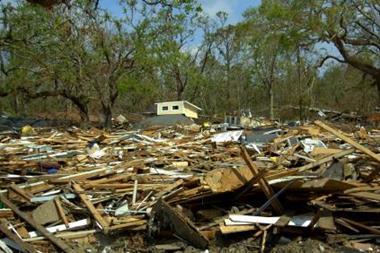Investigations into the accident at the Texas City refinery suggested that all was not well with BP’s perception of risk, says Lee Coppack
One of the world's most respected companies was responsible for the worst industrial accident in the US since 1990. An investigation by a US federal government agency found that ‘organisational and safety deficiencies at all levels of the BP Corporation’ were the root cause of the incident that killed 15 people and injured 180 at the Texas City, Texas, refinery.
Investigations which followed the fire and explosion at the refinery on 23 March 2005 revealed a deep gap between the perception of risk by BP's senior management and board and by external investigators, even though BP is a company which has consistently received top ratings for its accountability from groups such as Accountability and the corporate social responsibility consultancy, csrnetwork.
The most far reaching criticism came from the federal agency, the Chemical Safety and Hazard Investigation Board (CSB), which investigated not only the company's safety performance at Texas City, but also the role played by BP Group management in the UK.
Its findings, and those of other investigations into Texas City and other safety and environmental incidents involving the company, pose questions about the reporting of risks to shareholders, especially in light of the requirement, expected to come into effect later this year, that UK quoted companies include a discussion of their environment, people and social risks as part of the narrative business review in their annual reports.
It also does not appear that institutional investors or business leaders immediately regarded the Texas City incident as evidence of anything seriously wrong at BP, despite a number of other publicised safety and environmental lapses before and after March 2005. For example, in May 2001, the US Occupational Safety and Health Administration (OHSA) fined BP over the deaths of three workers in a fire and explosion at its Clanton Road refinery in Augusta, Georgia. “This tragedy could have been avoided if the company had adhered to its own internal audit recommendations that improvements were needed in the lockout/tagout programme,” said William Grimes, OSHA's Atlanta-East area director. "Safety studies have little value if resulting recommendations go unheeded."
The price of the company's stock resumed an upward course from mid-May 2005 after a dip immediately following the Texas City disaster. When the ‘World's Most Respected Companies’ report appeared in November 2005, BP had risen to seventh place overall from 15th in 2004, and was first among energy and chemicals companies worldwide. Its corporate governance was ranked fifth in the world, up from 19th place in 2004. BP's efforts to demonstrate its corporate social responsibility had also borne fruit. One chief executive said, “They are a very big company and they still care about the environment.” The survey did not appear in 2006.
Lord Browne had built BP into the world's second largest publicly traded oil company partly through a series of takeovers, including that of the US oil company Amoco, which owned the Texas City refinery. BP was well positioned as the price of oil soared to over $70 a barrel, despite the disaster at Texas City and hurricane damage later in 2005. The company's share price on the New York Stock Exchange continued to rise with the price of crude oil and reached an all time high of over $76 in May 2006.
Only in August 2006, when the price of oil was coming down and when a small oil spill and the discovery of ‘unexpectedly severe corrosion’ caused the company to temporarily close its Prudhoe Bay oil operations in Alaska, did the performance of BP's shares begin to fall away from that of Exxon Mobil, generally regarded as the most comparative company. Between April 2006 and April 2007, BP's shares dropped by 8%; Exxon's rose by 24%. The BP price reached a low of $58.80 on 5 March 2007, but had rallied to around $65 in early April.
Managing the crisis
In the aftermath of the disaster at Texas City, BP did the right things. Ross Pillari, president of BP America, arrived the next morning, expressed the company's deep regret over the accident and promised full cooperation with the investigations into the causes. Lord Browne flew in quickly and took responsibility on behalf of the company.
BP established a $1.625bn provision for injury claims, and during 2006 reached settlements with all the relatives of the 15 people who were killed and with hundreds of others who had filed injury claims. It also paid a $21.4m penalty imposed in September 2005 by OHSA, having accepted OHSA's findings without contest.
BP responded to the findings of the investigations by its own and other experts to improve safety. It allocated $1.7bn a year on average for four years to improve the safety and reliability of its US refineries, formed a safety and operations function to operate across the group, appointed a new chairman and president of BP America and created an advisory board to assist the management of BP America in monitoring the company's US operations.
Acting on the recommendation of the CSB, which had begun its own investigation immediately, BP set up an independent safety review panel in October 2005, led by former Secretary of State James Baker, to examine the company's corporate safety management systems, safety culture and oversight of its North American refineries.
Root causes
In its interim analysis of the incident, published in May 2005, BP described the immediate cause of the event as, ‘A series of failures by BP personnel before and during the start-up of the isomerisation process unit in the Texas City refinery.’
The company's own fatal accident investigation report, published in December 2005, also tended to focus on local management, culture and safety practices. For example, it speaks of a working environment that was resistant to change and lacked ‘trust, motivation and a sense of purpose.’
However, when the Baker panel reported on 16 January 2007, it said that there were ‘significant process safety issues’ at all BP's refineries in the US, not just Texas City. It issued a series of recommendations, which BP said immediately that it would implement in full.
Even stronger criticism, this time directed at the heart of the company, came in March when the CSB published its report. The CSB reviewed over 30,000 documents, conducted 370 interviews, tested instruments and assessed damage in the Texas City refinery and surrounding area to get to the root causes of the disaster, and some of them, the CSB believes, were in the company's board room in London.
Among its conclusions was that, ‘The BP board of directors did not provide effective oversight of BP's safety culture and major accident prevention programmes. The board did not have a member responsible for assessing and verifying the performance of BP's major accident hazard prevention programmes.’
It also blamed some of the very things that had helped make BP so successful: saving money from the combined group and improving margins. ‘Cost cutting, failure to invest, and production pressures from group executive managers impaired process safety at Texas City,’ said the CSB.
In response, BP said its own investigation's findings were generally consistent with those of the CSB, but expressed ‘strong disagreement with some of the content of the CSB report.’ BP has particularly disputed that ‘budget decisions or lack of expenditure were a critical factor, or immediate cause of the accident.’
The company stated, ‘In the two years since the accident, BP has taken significant steps to identify and address the causes of the 23 March 2005 Texas City explosion in order to reduce risk and improve process safety management and performance at its five US refineries. This effort continues. BP is committed to preventing such a tragedy from occurring again.’
Investors respond
Institutional shareholders in the UK rarely criticise companies in public, but the findings of the CSB resulted in a call by the Local Authorities Pension Fund Forum (LAPFF) for BP to tie senior management and executive pay more closely to future health and safety performance. At the company's annual general meeting on 12 April, the company's remuneration report was agreed, but was subject to what the LAPFF said was an unusually high level of investor opposition, with apparently 17% of votes cast against it. Forum chairman councillor Darrell Pulk said, “It is plainly right that BP should not pay directors full bonuses in the wake of the highly critical Baker and CSB reports. But we do not see any linkage between long term incentives and BP's stated desire to be a leader in process safety management.
“While we welcome the company's openness to investor engagement, and a decision to include process safety as a factor in determining future bonuses, we have no choice but to oppose the remuneration report in this instance. It is important the investors give the company a clear message – if safety culture is to be at the heart of the business, then it must also be inherent in the board's remuneration policy.”
The findings of the investigations into Texas City have wider implications. The CSB called on OHSA to increase its inspection and enforcement at US refineries and to require their owners ‘to evaluate the safety impact of mergers, reorganisations, downsizing and budget cuts.’
As an editorial in the Financial Times on 20 March 2007 stated, ‘All companies wage a constant battle to save money and improve margins. The perils of squeezing costs too hard are rarely as high as those faced by BP and its rivals. But the conclusions of the CSB report should resonate for chief executives well beyond the oil sector.”
Institutional investors, such as the UK's largest pension fund manager, Hermes, have welcomed the requirement for quoted companies to provide a narrative business review that includes discussion of principal risks and uncertainties. Hermes director, Paul Lee, said, “We are strong supporters of narrative reporting. The financial information does not tell you very much about where the company is going. You can glean it better from a softer, more discursive discussion.”
What is critical to Hermes is that the reporting discriminates between the issues that are important to the future of the business. “It is absolutely clear whether a report is written by a board that is in control and knows where it is going, or whether it is written by juniors in the finish department and checked by the lawyers. That does not sell the company to investors and it is a missed opportunity,” said Lee.
He accepts that the better managed companies will be most likely to produce good reports in the first place, but he also believes there is positive feedback from getting issues onto the board agenda, even if it is just once a year. “No, it does not stop errors,” he says, “but it does have an impact and gradually helps reduce risk.”
Lee Coppack is editor of StrategicRISK's sister publication, Catastrophe Risk Management, E-mail: Lee.coppack@cat-risk.com, www.cat-risk.com

















